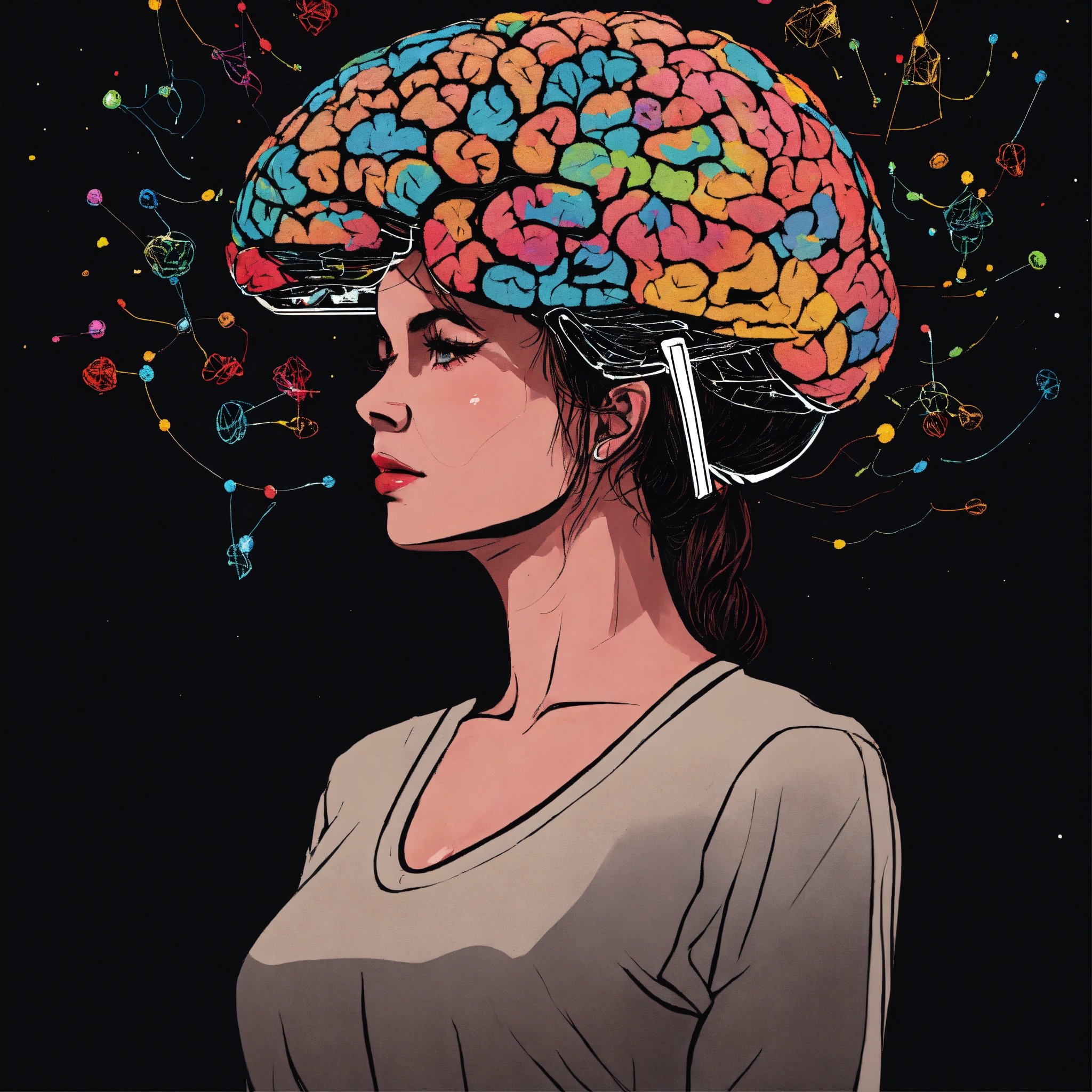Artificial Intelligence, or AI, has rapidly evolved, revolutionizing the way we live and work. As we entrust machines with increasingly complex tasks, a pressing question arises: Can AI be ethical and moral? In this article, we will delve into the ethical considerations surrounding AI, exploring key principles, real-world examples, and the challenges of instilling morality in machines.
The Ethics of AI: Key Principles
Ethical AI is not a mere buzzword but a fundamental aspect of responsible AI development. Let’s break down the key principles guiding ethical considerations in the realm of artificial intelligence.
Transparency and Explainability
In the realm of AI, transparency is paramount. Imagine using a recommendation system with no insights into how it arrived at its suggestions. Transparency not only fosters user trust but also allows for better scrutiny and accountability in decision-making.
The rise of explainable AI is a testament to the importance of understanding how machines arrive at specific outcomes. It’s not just about the result; it’s about the journey, and users deserve an explanation. This principle ensures that AI isn’t a black box but a tool with clear, comprehensible operations.
Fairness and Bias Mitigation
Fairness is a foundational ethical principle in AI. Developers must grapple with the challenge of creating algorithms that treat all users impartially. Unfortunately, biases can inadvertently seep into AI systems, reflecting the prejudices present in the data used for training.
Consider the case of a facial recognition system that exhibits racial bias. If the training data predominantly features certain demographics, the system may struggle with accurate recognition for underrepresented groups. Addressing biases requires continuous vigilance, thorough testing, and a commitment to fairness throughout the development lifecycle.
Privacy and Data Protection
As AI systems rely on vast amounts of data, safeguarding user privacy is non-negotiable. Ethical AI should prioritize the responsible handling of sensitive information, adhering to legal frameworks and user expectations.
From smart home devices to healthcare applications, the challenge lies in striking a balance between data utilization and protection. Users should feel confident that their personal information is handled with the utmost care, and ethical AI development ensures just that.
Accountability and Responsibility
Accountability is the backbone of ethical AI. Developers and organizations must take responsibility for the impact of their creations. If an AI system makes an incorrect decision, who bears the responsibility? How can we ensure accountability in an ever-evolving landscape?
Ethical responsibility extends beyond developers to encompass users and policymakers. It’s a collective effort to shape AI that aligns with societal values and standards. By fostering a sense of responsibility, we pave the way for ethical AI that benefits humanity.
Moral Machines: Can AI Have Morality?

Moving beyond ethics, the question of whether AI can possess morality is both intriguing and complex. Morality involves a deep understanding of right and wrong, a dimension that machines, devoid of consciousness, may struggle to comprehend.
Understanding Morality in AI
Morality, a product of human consciousness, seems elusive for machines. While AI can simulate decision-making based on predefined rules, true moral understanding requires context, empathy, and subjective interpretation—qualities inherently human.
However, AI can be designed to align with moral principles. Consider autonomous vehicles faced with ethical dilemmas on the road. Programming these machines to prioritize human safety over all else reflects a form of moral decision-making, albeit within predefined parameters.
The Challenge of Instilling Morality
The challenge lies in instilling morality in AI without anthropomorphizing machines. We must be cautious about assigning human-like emotions or ethical reasoning to AI entities. Instead, ethical frameworks can guide decision-making based on predefined values and principles.
Take, for example, a medical diagnosis AI. By adhering to ethical guidelines, the system ensures unbiased assessments and recommendations, prioritizing patient well-being. While not morality in the human sense, it reflects a commitment to ethical practices.
Responsible AI Development Practices
Now that we’ve explored the principles guiding ethical AI, let’s delve into the practical aspects of responsible AI development. Ethical considerations are not theoretical; they require actionable practices to ensure the responsible creation and deployment of AI systems.
Ethical AI Design
It design starts at the inception of a project. It’s about integrating ethical considerations into the very fabric of AI development. This involves assembling interdisciplinary teams that bring diverse perspectives to the table.
Imagine a team comprising not just programmers but ethicists, psychologists, and legal experts. This diversity ensures a comprehensive approach to ethical AI design, minimizing blind spots and addressing potential challenges proactively.
Continuous Monitoring and Evaluation
The journey doesn’t end with AI deployment; it’s an ongoing process of monitoring and evaluation. AI systems must undergo continuous scrutiny to identify and rectify biases, improve performance, and adapt to evolving ethical standards.
Think of it as a dynamic feedback loop. Regular evaluations, user feedback, and advancements in ethical understanding feed into iterative improvements. This cyclical approach ensures that AI systems evolve responsibly, aligning with the ever-changing landscape of ethical considerations.
Collaboration and Industry Standards
Ethical AI isn’t the responsibility of a single entity or developer. It’s a collaborative effort that transcends organizational boundaries. Industry standards play a pivotal role in setting benchmarks for ethical AI development.
Consider the analogy of a shared ecosystem. Just as diverse species coexist in an ecosystem, AI developers, researchers, and policymakers collaborate to establish and adhere to ethical norms. This collaborative approach fosters a culture of shared responsibility, ensuring that ethical considerations are not mere guidelines but integral to AI development practices.
Case Studies and Real-world Examples
To illustrate the practical implications of ethical AI, let’s explore real-world case studies that highlight both successes and challenges.
Examining Ethical AI in Action
One notable case study involves the use of AI in the criminal justice system. Predictive policing algorithms, if not designed and monitored ethically, can perpetuate systemic biases. By examining such cases, we gain insights into the real-world impact of ethical considerations in AI.
Consider the city of Los Angeles, where the police department adopted predictive policing algorithms. Without proper safeguards, these algorithms exhibited biases, disproportionately impacting certain communities. This case underscores the critical importance of ethical AI design and continuous monitoring to mitigate unintended consequences.
Lessons Learned from Ethical Successes and Failures
In contrast, let’s explore a success story in the realm of healthcare. AI-driven diagnostic tools have demonstrated exceptional accuracy in detecting medical conditions. By adhering to ethical guidelines, developers ensured unbiased training data and continuous evaluation, resulting in a tool that aids healthcare professionals without introducing additional biases.
The key takeaway is that ethical considerations are not theoretical luxuries but practical necessities. Successes and failures in real-world applications offer valuable lessons, shaping the trajectory of AI development and its ethical evolution.
The Future of Ethical AI

As we peer into the future, it’s essential to consider the evolving landscape of AI and its ethical challenges.
Emerging Technologies and Ethical Challenges
Emerging technologies bring both promise and ethical dilemmas. Take, for instance, the rise of AI in autonomous weapons. The ethical implications of granting machines the power to make life-and-death decisions demand careful consideration and international collaboration.
Ethical AI development in the face of emerging technologies requires proactive measures. It involves anticipating potential challenges, engaging in interdisciplinary dialogues, and establishing ethical guidelines that transcend borders.
Global Perspectives on AI Ethics
Ethical considerations in AI are not confined to a single cultural or geographical context. They vary across societies, necessitating a
global perspective on AI ethics. What may be considered ethical in one region might raise concerns in another.
Imagine a global roundtable where representatives from diverse cultures, legal systems, and academic disciplines converge to establish a universal framework for ethical AI. This collaboration ensures that AI development aligns with shared human values, fostering a global culture of responsible AI usage.
Conclusion
In conclusion, the question of whether AI can be ethical and moral is not a binary inquiry but a nuanced exploration of principles and practices. We’ve journeyed through the key principles of ethical AI, pondered the possibility of machines possessing morality, and examined the practical aspects of responsible AI development.
As we navigate the ever-expanding landscape of AI, one thing becomes clear: Ethical considerations are not optional. They are the bedrock upon which responsible AI stands. By embracing transparency, fairness, privacy, accountability, and collaboration, we pave the way for AI that augments human potential without compromising our ethical compass.
In the grand tapestry of technological evolution, ethical AI isn’t just a desirable feature; it’s an imperative that shapes the future of human-machine collaboration. So, can AI be ethical and moral? The answer lies in our commitment to ethical principles, our vigilance in development practices, and our collective responsibility to ensure that AI serves humanity ethically and responsibly.


1 thought on “Can AI Be Ethical and Moral? The Principles and Practices of Artificial Intelligence and Ethics”